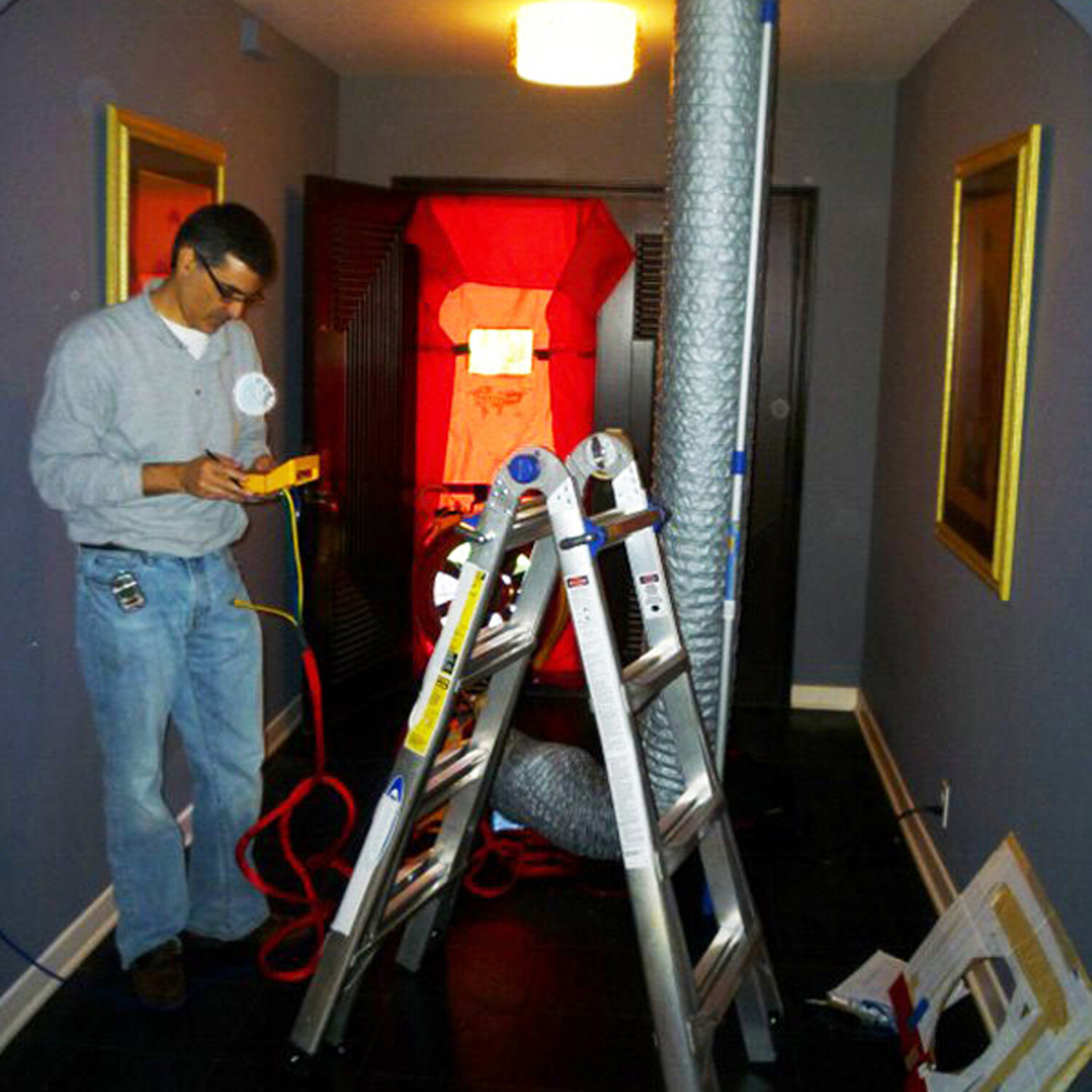HERS Testing & Rating
OVERVIEW | New construction/remodel | existing home | AIR BALANCING
What is a HERS rating?
HERS ratings are also referred to as HERS tests, HERS field verifications or HERS reports. HERS stands for Home Energy Rating System. Residential HERS ratings can be for any number of different features, though the most common are to verify the efficiency of central heaters and air conditioners for air duct integrity, total airflow, blower fan power draw and refrigerant charge levels. In addition, for new construction walls, floors and roofs (the “envelope” of a house) might also be tested for air tightness, insulation installation quality as well as hot water heaters and piping. A HERS certificate or report (the "CF-3R" form) is provided when a system is tested and passes.
What is a HERS Rater?
HERS raters are special inspectors certified by the California Energy Commission (CEC) to rate homes in California according to the Home Energy Rating System (HERS). A HERS rater is trained to perform third-party energy efficiency verification inspections and tests. These ratings include field verification and diagnostic testing to determine energy efficiency levels among homes tested for duct efficiency, envelope (walls, windows, doors, floors and roof) leakage and building insulation for compliance with current building efficiency standards. HERS raters work hand-in-hand with local building departments who are legally required to obtain a special document (CF-3R [formerly CF-4R] form) signed by a certified HERS rater before final approval of any building that uses measures requiring field verification and diagnostic testing to show compliance.
A HERS rater must be independent and cannot have any financial involvement with the construction project. For example even if the HVAC contractor is HERS certified, they cannot perform the inspection on their own work as it would be a conflict of interest. While the HVAC contractor should test their own work, a third-party HERS rater is required to verify the contractor’s work and provide official documentation (CF-3R [formerly CF-4R] form) to city inspectors.
HERS Field & Diagnostic Tests
Existing Conditions Verification for Additions and Alterations: Visual field verification of a home’s current "energy efficiency features" such as floor, wall and ceiling insulation levels, window construction, hot water and HVAC system efficiency)
Duct Leakage Testing: “Duct Blasting” — ensuring that ducts do not leak more than a specified amount by pressurizing the ducts and measuring how much air escapes
Refrigerant Charge and Airflow (RCAF): Ensures that the air conditioning refrigerant is neither over- nor under-charged and that the air moving through the system is also neither too slow nor too fast)
Blower Door Testing (or Reduced Building Infiltration Test): Ensures that a house does not leak more than a specified amount by pressurizing the house (windows and doors tightly closed) and measuring how much air escapes
Quality Insulation Installation: A rigorous visual inspection of a home’s “air barrier” to ensure it it will be air tight and visual inspections using state provided 80+ point checklists to verify quality assurance for insulation installations
SEER or EER or HSPF Verification: Verifies specified equipment is actually installed
Fan Efficacy: Ensures the blower fan’s wattage draw is less than or equal to the ratio 0.58 or 0.45 watts per cubic feet per minute of air moved
Maximum Cooling Capacity: Verifies the engineering of a heating and/or cooling system
Buried Ducts: Verifies the insulation of ducts buried in attic insulation (if the attic ducts are buried deeply in the attic insulation, the distribution efficiency of those ducts will dramatically increase)
TXV/EXV Verification: Verifies the existence of an air conditioning part – Thermostatic Expansion Valve (2005 energy efficiency building code standards only)


